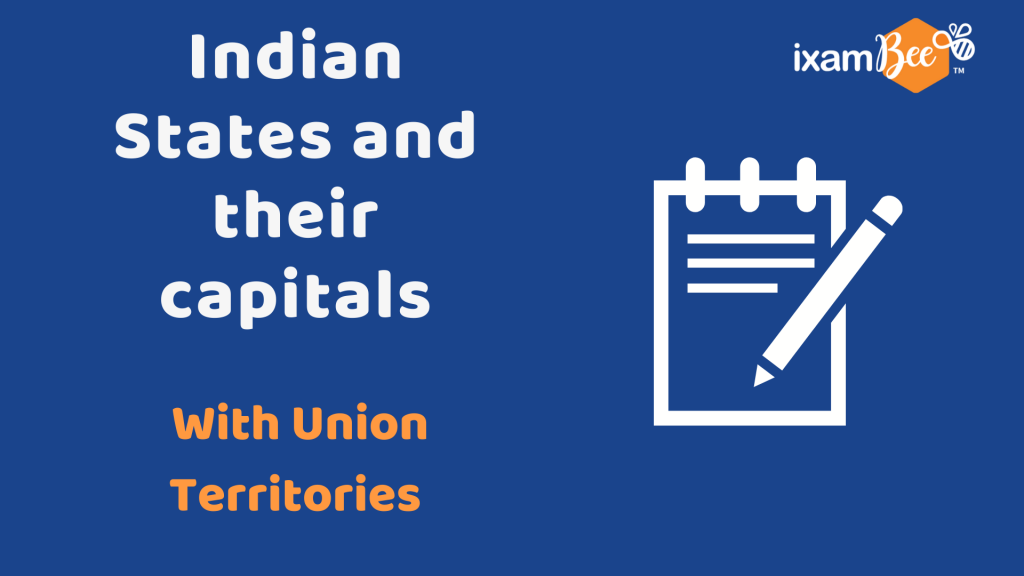The Republic of India celebrated for its rich cultural tapestry and diverse climatic conditions, is prominent in South Asia. With a democratic ethos, India spans 812.3 million acres, securing the 7th rank globally. Bordered by Bangladesh, China, Pakistan, Nepal, Bhutan, Afghanistan, and Sri Lanka (via a water boundary), India uniquely epitomizes “Unity in Diversity” by fostering national unity amidst cultural and regional distinctions. The recent territorial reorganization has yielded 28 states and 8 Union Territories, including the newly created Jammu, Kashmir, and Ladakh.
Renowned for possessing the world’s lengthiest written constitution, India’s constitutional framework comprises 395 articles across 22 parts and 8 Schedules. Adopted on November 26, 1949, and enforced on January 26, 1950, the Constitution of India designates this latter date as Republic Day, celebrated annually. Dr. B.R. Ambedkar, Union Law Minister and chairman of the Drafting Committee, is hailed as the architect of India’s constitution, having played a rather important role in its formulation.

This blog will equip aspirants with comprehensive details about India’s states and Union Territories (UTs). Navigating the intricacies of this subject is crucial for success in competitive examinations. Here, we will furnish reliable information on the number of states, their names, and respective capitals, facilitating a thorough understanding of this essential topic. Aspirants can rely on this blog to enhance their knowledge and excel in examinations that frequently test this domain.
Formation of India: Brief History.
India’s journey through time is a vibrant mosaic of cultures, empires, and revolutions. From the ancient Indus Valley Civilization and the Vedic era to the grandeur of the Maurya and Gupta empires, the subcontinent’s history is a testament to its resilience and diversity. The Mughal era brought a fusion of cultures, leaving an indelible mark on art, architecture, and governance. However, the 17th century saw the onset of British colonization, which reshaped India’s socio-political fabric. The relentless struggle for independence bore fruit in 1947, when India emerged as a free nation, albeit divided into India and Pakistan. The adoption of the Indian Constitution in 1950 cemented India’s identity as a sovereign, democratic republic, celebrating its unity in diversity. Below is a timeline tracing the formation of Indian states and union territories, reflecting the nation’s evolving administrative and cultural landscape.
- Andhra Pradesh (1953):
The birth of Andhra Pradesh in 1953 was a landmark event under the States Reorganization Act, which prioritized linguistic reorganization. Previously part of Madras, the separation acknowledged the aspirations of the Telugu-speaking population. This move not only honored linguistic identities but also set the stage for regional development and governance tailored to local needs. - Kerala (1956):
In 1956, Kerala emerged as a unified state by merging Travancore-Cochin and Malabar. This reorganization aimed to bring Malayalam-speaking regions under one administrative umbrella, fostering cultural unity and socio-economic progress. - Gujarat and Maharashtra (1960):
The bifurcation of Bombay State in 1960 led to the creation of Gujarat and Maharashtra, catering to the Gujarati and Marathi-speaking populations, respectively. This division emphasized the importance of linguistic and cultural identities in governance. - Punjab (1966):
The division of Punjab in 1966 resulted in the formation of Haryana and Punjab, addressing the linguistic and cultural aspirations of the region. This move aimed to provide focused governance and promote regional development. - Assam (1972):
In 1972, Assam underwent a significant transformation with the creation of Meghalaya, Manipur, and Tripura as separate states. This reorganization recognized the unique cultural and linguistic identities of these regions, paving the way for localized governance. - Jharkhand, Chhattisgarh, and Uttarakhand (2000):
The dawn of the 21st century saw the formation of Jharkhand, Chhattisgarh, and Uttarakhand, aimed at enhancing administrative efficiency and addressing regional aspirations. - Telangana (2014):
The creation of Telangana in 2014 marked a significant milestone, addressing the long-standing demands of the Telugu-speaking population in the region. This move underscored the importance of linguistic and cultural identity in state formation. - Dadra and Nagar Haveli and Daman and Diu (2020):
The merger of Dadra and Nagar Haveli with Daman and Diu in 2020 streamlined governance and fostered regional development in these union territories. - Lakshadweep (1956):
As India’s smallest union territory, Lakshadweep was formed in 1956 to provide focused governance for its unique geographical and cultural landscape. - Puducherry (1962):
The formation of Puducherry in 1962 brought together its four non-contiguous enclaves under a unified administrative framework, emphasizing tailored governance. - Chandigarh (1966):
Designated as a union territory in 1966, Chandigarh serves as the shared capital of Haryana and Punjab, ensuring neutral and efficient governance. - Jammu and Kashmir and Ladakh (2019):
The reorganization of Jammu and Kashmir in 2019 led to the creation of two separate union territories—Jammu and Kashmir and Ladakh—addressing regional aspirations and geopolitical considerations. - Andaman and Nicobar Islands (1956):
Formed in 1956, this union territory was established to streamline governance for its remote and ecologically unique islands. - Chhattisgarh (2000):
Initially formed as a state in 2000, Chhattisgarh later transitioned to a union territory, reflecting the evolving nature of administrative structures in India.
Recent Updates in Indian States and Union Territories
Recent years have witnessed dynamic transformations across various Indian states and Union Territories, reflecting a commitment to progress, sustainability, and inclusive development. This overview delves into the recent updates and notable initiatives undertaken by select states and Union Territories, providing insights into their strategic focus areas, achievements, and contributions towards shaping a more vibrant and resilient India.
- Telangana (2023):
Telangana made strides in infrastructure with the inauguration of a major irrigation project, boosting agricultural productivity. The state also launched initiatives to promote digital literacy and e-governance, alongside advancements in healthcare. - Jammu and Kashmir (2023):
The union territory witnessed socio-economic reforms, including the inauguration of connectivity projects and initiatives to enhance skill development and education. - Gujarat (2023):
Gujarat focused on renewable energy, unveiling ambitious solar power projects. The state also celebrated its cultural heritage through festivals and tourism campaigns. - Puducherry (2023):
Puducherry prioritized economic revitalization and environmental sustainability, alongside strengthening social welfare programs. - Rajasthan (2023):
Rajasthan promoted its cultural heritage through innovative tourism campaigns and implemented water conservation initiatives to address environmental challenges. - Andaman and Nicobar Islands (2023):
The union territory emphasized eco-tourism and disaster resilience, while improving transportation infrastructure to enhance connectivity.
List of Indian States
India is administratively divided into 28 states, each with its own governance and distinct identity. These states collectively contribute to India’s administrative and cultural landscape, ranging from the populous Uttar Pradesh to the diverse cultures of Maharashtra and Tamil Nadu. Whether it’s the bustling streets of Delhi or the serene backwaters of Kerala, each state adds a unique flavor to the nation. The complete list of Indian states is provided below for reference.
| S.No | States Name | Capital | Founded on |
| 1 | Andhra Pradesh | Hyderabad/ Amravati | 1 Nov. 1956 |
| 2 | Arunachal Pradesh | Itanagar | 20 Feb. 1987 |
| 3 | Assam | Dispur | 26 Jan. 1950 |
| 4 | Bihar | Patna | 26 Jan. 1950 |
| 5 | Chhattisgarh | Naya Raipur (Atal Nagar) | 1 Nov. 2000 |
| 6 | Goa | Panaji | 30 May. 1987 |
| 7 | Gujarat | Ahmedabad/Gandhinagar | 1 May. 1960 |
| 8 | Haryana | Chandigarh/ Faridabad | 1 Nov. 1966 |
| 9 | Himachal Pradesh | Shimla (Summer)/ Dharamshala (Winter) | 25 Jan. 1971 |
| 10 | Jharkhand | Ranchi/ Jamshedpur | 15 Nov. 2000 |
| 11 | Karnataka | Bengaluru (formerly Bangalore) | 1 Nov. 1956 |
| 12 | Kerala | Thiruvananthapuram/ Kochi | 1 Nov. 1956 |
| 13 | Madhya Pradesh | Bhopal/Indore | 1 Nov. 1956 |
| 14 | Maharashtra | Mumbai (Summer)/ Nagpur (Winter) | 1 May. 1960 |
| 15 | Manipur | Imphal | 21 Jan. 1972 |
| 16 | Meghalaya | Shillong | 21 Jan. 1972 |
| 17 | Mizoram | Aizawl | 20 Feb. 1987 |
| 18 | Nagaland | Kohima/ Dimapur | 1 Dec. 1963 |
| 19 | Odisha | Bhubaneswar | 26 Jan. 1950 |
| 20 | Punjab | Chandigarh/ Ludhiana | 1 Nov. 1956 |
| 21 | Rajasthan | Jaipur | 1 Nov. 1956 |
| 22 | Sikkim | Gangtok | 16 May. 1975 |
| 23 | Tamil Nadu | Chennai | 26 Jan. 1950 |
| 24 | Telangana | Hyderabad | 2 Jun. 2014 |
| 25 | Tripura | Agartala | 21 Jan. 1972 |
| 26 | Uttar Pradesh | Lucknow | 26 Jan. 1950 |
| 27 | Uttarakhand | Dehradun (Winter)Gairsain (Summer) | 9 Nov. 2000 |
| 28 | West Bengal | Kolkata | 1 Nov. 1956 |
List of the Union Territories in India
The Jammu and Kashmir Reorganisation Act of 2019 designated October 31, 2019, as the historic day for creating two Union Territories: Jammu & Kashmir and Ladakh. This unprecedented move marked the first instance of a state being divided into two Union Territories. Additionally, Daman and Diu merged with Dadra and Nagar Haveli, forming a single Union Territory on January 26, 2020. The current Union Territories and their capitals are listed below for reference.
| Union Territories Names | Capital | Founded on |
| Andaman and Nicobar Islands | Port Blair | 1 Nov. 1956 |
| Chandigarh | Chandigarh | 1 Nov. 1966 |
| Dadra & Nagar Haveli and Daman & Diu | Daman | 26 Jan. 2020 |
| Delhi | New Delhi | 9 May. 1905 |
| Jammu and Kashmir | Srinagar (Summer)Jammu (Winter) | 31 Oct 2019 |
| Lakshadweep | Kavaratti | 1 Nov. 1956 |
| Puducherry | Pondicherry | 1 Nov. 1954 |
| Ladakh | Leh | 31 Oct 2019 |
Download the Map for UT of Jammu and Kashmir and Ladakh here
Prepare with ixambee
Bank exams emphasize general awareness and current affairs, necessitating candidates to stay abreast of recent developments within India’s geo-political landscape, including its 28 states and Union Territories. ixamBee offers support for banking exam preparation for aspiring candidates. Beepedia serves as a vital resource, offering constant updates on current affairs. Whether through meticulously designed exam pages, online courses tailored to the exam syllabus, or the invaluable practice provided by free mock tests and access to previous year papers, ixamBee ensures aspiring candidates are well-equipped to tackle the general awareness and current affairs section with confidence and competence.
Summing Up
India’s administrative canvas comprises 28 states and 8 Union Territories, each contributing to cultural diversity. From the unprecedented bifurcation of Jammu and Kashmir to the recent merger of Daman and Diu with Dadra and Nagar Haveli, these changes underscore the country’s dynamic governance landscape. Familiarity with these entities is essential for a holistic understanding of India’s socio-political fabric, serving as a crucial foundation for comprehensive knowledge about the nation.
ixamBee specializes in providing expert guidance and resources for banking exams 2025, ensuring that you are well-prepared for the Upcoming Bank Exams like RBI Grade B, NABARD Grade B, IBPS SO, and more. Our courses align with the bank exam calendar 2024, covering all the essential topics. With a focus on the upcoming bank jobs, our Previous Year Papers, BeePedia, SSC CGL, SSC CHSL, SSC MTS and other Mock Tests are designed to help you excel in upcoming banking exams.
Also Read:
Workload in RRB vs PSB (Public Sector Banks)
электронный займзайм без залога красноярсксрочно займ на киви















![Government Schemes on Women and Child Development in India 2021 [Updated] Government schemes in India:](/blog/wp-content/uploads/2021/06/Blog-images-2-100x70.png)
Thanks
This information was very helpful and sharing because we can learn this
Thanks I was able to complete my homework
Very useful…. I could learn this ??….. But please update this… Because it had changed 27 states and 9 union territories…..
Hi Ardra,
The information provided above is updated with the latest information. We have 28 states and 8 UT (Daman and Diu and Dadar and Nagar haveli have merged into one). For more such information, please follow ixamBee blogs regularly.
Thanks and Regards